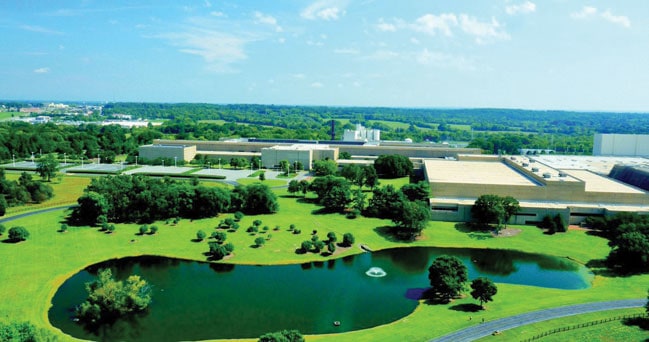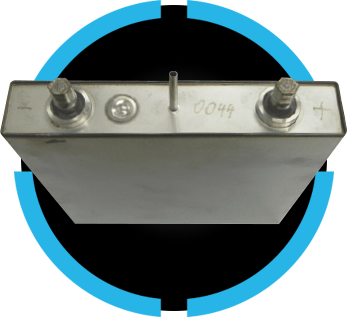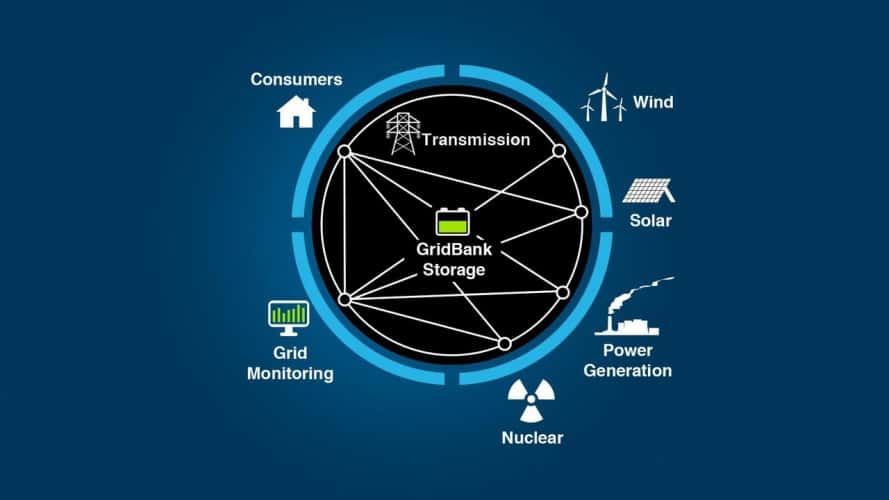They used to call it Marlboro Country. It had — and still has — rolling fields with miles of picket fences and scrub thickets in which wild turkeys try, and often fail, to hide from hunters. But the days when tobacco ruled North Carolina are long gone, and while its demise might have improved general health levels it took thousands of jobs with it.
But employment is returning to Concord, North Carolina, with the giant factory that once churned out millions upon millions of cigarettes for the Philip Morris company under new ownership. Its cavernous halls are still mostly empty, but soon they’ll ring to the sounds of manufacturing for a different kind of industry: one that might be set to be as emblematic of the early decades of the 21st century as tobacco was to the first half of the 20th: low-carbon energy.

Specifically, the former cigarette factory is to take on a new lease of life as one of the world’s first industrial-scale producers of grid-connected batteries, thanks to a company called Alevo. Founded by Norwegian cloud-computing entrepreneur Jostein Eikeland in 2008, Alevo has been operating in ‘stealth mode’ for almost a decade, with a new set of technologies and a novel business plan that it hopes will propel it to a leading position in a sector that Eikeland believes will be a crucial part of energy services in the coming decades.
The former Philip Morris plant is a vital piece in the jigsaw. Comprising three million square feet of manufacturing space in its own wooded and landscaped grounds, it’s a huge mass of angular brickwork on a Cyclopean scale, its architecture sometimes seeming to be inspired more by Aztec pyramids than any recognisable commercial building (to the extent that one visiting journalist was heard to remark about how ‘Ziggurats could seriously damage your health’ to the bemusement of American hosts who didn’t recognise the British health warning).

Inside, the building is a maze-like construction of lofty halls (one of which has been used in the filming of the Hunger Games movies and the TV series Homeland), seemingly endless corridors and low-ceilinged spaces that are best explored by a squeaky-tyred golf buggy. Chipped paintwork is being removed and new utilities installed ahead of the arrival of tooling and other production equipment for the manufacture of individual battery units and arrays housed in shipping containers, known as Gridbanks, many of which are destined for export — even, as Eikeland proudly says, to China.

Alevo’s technology is based on novel chemistry that, it claims, overcomes many of the drawbacks of existing batteries that limit their usefulness for grid-scale application. But the actual battery chemistry — the composition of the electrodes, which is what determines the voltage produced by the cells that make up the battery — is a standard configuration of a lithium ion phosphate (LiIP) cell.
LiIP cells are a well-understood, mature technology, but existing versions have inherent problems that make them difficult to use for grid-scale applications. The first is that they degrade over multiple discharge-recharge cycles, becoming less able to store charge and transmit it reliably. Secondly, the electrolytes in lithium batteries — the salts that surround the electrodes and transport ions and electrons around the cell — tend to be extremely flammable organic compounds, making them a risk: one that Boeing, to name one example, found almost catastrophic when batteries in several of its new 787 Dreamliners caught fire shortly after the aircraft entered service.
Alevo has got around this problem by dumping the organic electrolyte usually used in LiIP cells and developing a new one. Researched at labs in Karlsruhe and Dormagen, Germany, this is completely inorganic; a gel containing sulphur dioxide and aluminium chloride. This prevents the runaway thermal reactions that can lead to battery fires and explosions in conventional organic-based lithium cells, and has what Alevo claims are two key properties: thermodynamic stability, always returning to the same state following each complete charging cycle with no increase in temperature; and an electrochemical loop to regulate overcharge and ‘deep discharge’ conditions, which minuses degradation and its related reduction in capacitance. In tests, according to the company, the battery outperforms every industrial performance measure, and there is no change in internal resistance after more than 40,000 charge-discharge cycles.
The Concord factory will produce these batteries in bulk, shipping in the electrode materials, including nickel foam from Japan and China, lithium ion phosphate and graphite from North American producers and the raw materials for the inorganic electrolyte. These will be packed into shipping creates equipped with the power electronics to control charge and discharge.

But for Alevo, this is only part of the story. Rather than positioning itself as just a battery manufacturer, which puts it into competition with established energy sector players such as Alsthom and Korean manufacturers, as well as the ambitions of California’s Tesla, which is in the process of setting up a ‘gigafactory’ to make batteries at a huge scale, Alevo is ‘servitising’ the sector by establishing itself as an energy storage services provider that happens to build its own batteries. By selling the service rather than the product, it secures an income stream by locking customers into long-term contracts and reduces the initial outlay needed; battery prices are a stumbling block in the establishment of electricity storage capacity, Eikeland said.
Backing up this service is an analytics system, operated by a purpose-built supercomputer with a processing capability of 3 petaflops (3,000 trillion calculations per second). In terms of both processing cores and memory, the A2 System, also located at Concord, is the largest single coherent symmetric multiprocessing system ever built, Alevo claims. This system will be used to simulate electricity grids containing a diverse range of generating hardware — nuclear, fossil fuel and renewable — to identify the best ways to deploy energy storage. This could be for peak smoothing or storing excess energy from renewables, for example.




Nanogenerator consumes CO2 to generate electricity
Nice to see my my views being backed up by no less a figure than Sabine Hossenfelder https://youtu.be/QoJzs4fA4fo